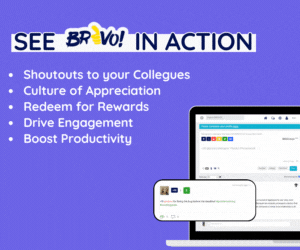
Employee retention strategies, as the name implies, are the measures taken by organizations to keep their employees working for them. Such a strategy involves steps that make and keep the employees motivated to stay with the company for a longer period. They are also intended to make employees work towards achieving the organizational goals with the required levels of focus and productivity.
A strategy intended to keep the workers employed can play a considerable role for the company to not make its worthy employees quit. It also helps in keeping the employee turnover and employee retention close to the desired level, if not exactly to the desired level.
Why are the Employee Retention Strategies important?

To retain the existing employees is a more efficient organizational practice than to hire and train the newer ones. Thus, the benefit of employee retention strategies is more than just keeping the employees associated with a company.
According to Gallup, replacing existing employees with new hires can cost an organization twice the salary of the replaced employee. Aside from this, the productivity levels of the workplace may also affect due to the newer work environment for the newly-hired workers.
Why do employees choose to stay with a company?

For an organization, it is equally essential that it learns the grounds on which its employees decide to keep working for it as much as it is important to learn why employees are leaving it.
The most understandable reason for the employees sticking with a company could be the emotional connection that develops between the organization and its employees over the period of their employment. The other reason for it could be the workplace relations that an employee develops with other employees.
With the understanding of why employees choose to stay with a company, it may become easier for an organization to keep the employees working for it.
Since an emotional connection between an employee and a company can affect employee retention positively, a company, by devising a plan of action based on the same, can get much help in retaining its employees.
The peer relations between the employees can also help your worthy employees to stay. Therefore, fostering such relations can also prove to be one of the best employee retention strategies, which will make it rather difficult for an employee to leave a workplace.
Determining after why its employees are choosing to stay with it, even in its testing times, a company should make the leading factors more robust. It should strive to keep providing such an environment, so the other employees are influenced positively.
Besides the desired working environment, your employee retention is largely determined by the level of equality and transparency your company has to offer across the board. It means that when all employees are treated equally and so without any discrimination, it may influence their decision to stay with a company. The following practices may make employees stay in this respect:
- Treating all the employees as equal regardless of any bias.
- Paying the employees fairly.
- Developing trust between the employees and the management.
- Providing employees with job security.
- Bringing into light the contribution of employees.
Read: Want To Retain Top Talent? Follow These Bravo Recognition Strategies For Better Employee Retention!
Why do employees decide to leave a company?

Employees can leave for more than one external factor. They may also leave due to their own reasons. However, the most common grounds for a company to face employee turnover are under:
1) Employee unhappiness:
One of the primary reasons for an employee leaving a workplace is the dissatisfaction that they had working there. The feeling of discontent could be due to an unprofessional work environment, toxic/ harsh work relations, etc. There could also be other factors leading to the unhappiness of an employee while working for an organization.
How to deal with Employee unhappiness?
To deal with it, you need to first identify the issues associated with your very workplace. Once identified, they should be addressed as soon as possible so as not to let other employees leave due to it.
2) Better opportunities:
Your skilled workers are inevitably going to receive better opportunities while they’re under your employment. However, how worthwhile an employee is, determines the extent a company goes to keep them employed.
How to deal with better opportunities?
You can’t prevent any of your employees from receiving better options. However, you can definitely work on offering a highly competitive salary along with benefits including rewards, career growth, ideal work environment, and similar.
3) Events-based turnover:
Sometimes, your employees would decide not to keep working for you simply due to a situation they are being faced with. For example, an employee may decide to pursue higher education and thus may find it difficult to handle their work and education simultaneously.
How to deal with events-based turnover?
To deal with the situations that lead the employees to quit due to a necessity, a company may first require to know the event that is causing the employee turnover. Once it has been learned, it can offer employees such help that would no longer require the employee to leave.
In the example where an employee has to leave over a lack of balance between advanced education and job, a company can offer them flexible work hours so they could keep a balance between the both. And this may help prevent employee turnover.
4) Negative employee experience:
Not always employees working for a company quit working due to a better opportunity or for pursuing higher education. Instead, they may also exit unplanned.
When employees exit from a company unplanned, then it is most often the result of an unpleasant employee experience. In addition, it could be due to negative behavior towards them, for example, bullying, harassment, prejudice, etc.
How to deal with negative employee experience?
The first and foremost way to prevent your employees from leaving due to a negative employee experience is by making their working at the company, precisely at the workplace, better throughout their employment journey.
The negative behaviors faced by certain employees, which result in their quitting the company, can be addressed by ensuring that such incidents are not repeated. It is also important to make sure in this regard that such instances do not go unreported. All this can help fight such behaviors experienced by the workers.
Read More: Why Is Employee Retention Important?
Employee Retention Strategies That Work
Recruitment and transparent job roles
Your hiring process has a key role to play in employee retention. Through your recruitment process, you should be able to fill the role with the most suitable candidate. Furthermore, factors such as skills and competency may least affect employee turnover and retention.
To what extent a candidate is suitable for a position determines how far they will be working for an organization. In this aspect, it is also important that while a position is being filled, the prospect candidate(s) are provided with the correct job description.
Defining what the role demands from a candidate from the beginning lay the foundation of stronger employee retention. On the other hand, when the employees are asked to play a role not originally defined in their job description, it is likely to make them switch their jobs.
Creating a helpful and sympathetic work-environment

Naturally, the employees are more inclined to work at places that are more supportive. When employees are helped every time they are being faced with a problem, both at personal and professional fonts, it gives them a feeling of belongingness, resulting in an increase in their stay with the company.
A workplace with a supportive culture can bring manifold benefits for a business. It helps make employees reach their true potential when they experience working in a rather caring environment. Besides, it can go a long way in your employee retention. So, providing employees with a kind work environment can be helpful in various ways and not only for keeping the employees associated with a company.
Employee training
Providing employees with the training that relates to their job roles is also one of the employee retention strategies. It helps them not only achieve their supposed tasks, but they may also be able to perform beyond the company expectations.
With the employees not given proper training to what their position demands, it may not result in a favorable outcome for both the company and the employee. It foremost leads to the unsatisfactory performance of the employees, thus leading to a voluntary or involuntary employee turnover.
Communicating with the employees
When an organization keeps communicating with its employees, it may lessen its employee turnover and may also help to retain its star employees.
Communication with the employees also leads them to perform better since they can seek help when stuck. This makes their employer-company more satisfied with their performance, resulting in a decreased turnover (voluntary and non-voluntary) and, subsequently, increased retention.
Offering employee perks and benefits
Offering employees with different benefits is one of the employee retention strategies that work. Of course, with the employees being provided with a monetary value in return for the success they bring to the company, they are likely to stay with their company for a longer period.
An important aspect to understand is that higher salaries cannot be considered as perks or benefits. Rather, a competitive salary only helps hire a skilled individual. The employee benefits, on the other hand, help retain these very top-skilled candidates.
The perks and benefits that a company can provide its employees entirely depend on its discretion. However, they usually include but are not limited to health insurance, discount coupons, employee wellness discounts, etc.
Offering employees the benefits of their choice may bring ideal results for a company in regard to their retention. Thus, you can also ask for what your employees prefer to receive as part of their perks and benefits so as to keep them engaged with the company.
Career development opportunities and plans
Devising plans for developing the careers of employees along with offering them sufficient opportunities that may help them grow in their respective careers are one of the effective employee retention strategies.
When employees are helped by their organization to grow in their respective fields, it gives a realization that the company is interested in their success as much as it is on its own. And this not only helps to improve their productivity but also makes them more engaged with the company.
How an organization can make plans and offer adequate opportunities to its employees is usually divided into three parts: annual, bi-annual, and quarterly.
Every year (annually), employers can discuss with their employees what growth opportunities they could be offered. On the other hand, employees can also discuss their career development every six months (bi-annually) or even four months (quarterly) in some cases.
Performing employee recognition

An organization can appreciate and acknowledge its employees for their hard work, efforts, and achievements as one of its employee retention strategies.
Your employee retention can be positively impacted if the employees are given due credit for their share of contributions to the company. It helps greatly in keeping your talented employees retained when they’re recognized for their good work. In addition to retention, acknowledging your employees also helps keep them on the course of action.
Helping to manage further education
Not always an employee would leave an organization to join another. In fact, employees may also leave a company to further pursue their education.
A company to not lose its worthy employees over their pursuit for an advanced education should offer a relevant and suitable opportunity and room. The help that employees can be provided is not necessarily financial. However, it can most likely be managing their education and job at the same time.
If a company helps a worthwhile employee in balancing their further education and job role, not only is it likely to retain them, but their work performance is also likely to elevate.
Offering just compensations
It is never possible for a company to offer equal compensation to its employees since one employee may possess more or fewer skills than their counterpart. However, compensating the employees fairly as per their skill and workload should be totally achievable, and it should be one of the employee retention strategies of a company.
One of the top reasons why employees exit a company is because they are not paid fairly for the amount of work they do and the efforts that they put in. A report from Linkedin in the year 2020 revealed that the organizations where employees are paid just have significantly less number of employees exiting.
Employees can also be given pay raises, promotions, or higher job roles for compensation against their contributions.
Avoiding making employees burned out
Workplaces where employees are in constant demand to work and perform, may experience a higher level of employee turnover than the ones that ensure employees work with peace of mind.
When employees are made to work on the loop, it disturbs their work-life balance. With it, the performance level also declines, making the subsequent efforts of the employees rather unproductive.
The main reason why employees who are under constant pressure tend to quit is that they have become exhausted and burned out for quite some time. And this inevitably leads to the employees quitting their company.
Better employee experience
A better employee experience is one of the primary reasons why the employees choose to stay with a company for a longer period. This being the reason, it is one of the employee retention strategies that work.
The Gallup defines the employee experience as:
“The employee experience is the journey an employee takes with your organization. It includes every interaction that happens along the employee life cycle, plus the experiences that involve an employee’s role, workspace, manager and wellbeing.”
A report from Linkedin suggests the four P’s that comprise a good employee experience that leads to better employee retention. They include people, place, process, and product. As for the place, it means the choice that the employees have to work either from the office, home, or both.
Companies that necessitate employees to work from the office only may experience an enhanced rate of employee turnover. However, entirely working from home may also equally negatively influence employee retention. It means that employees should be given a choice in regard to their preferred place of work, and forcing them to work at/from one place may affect their employee experience and, subsequently, their decision to stay with the company.
Creating an inclusive workplace
The level of inclusivity at your workplace also determines how strongly you are able to retain your worthy employees. The reason could be that a broader level of diversity may give a sense of job security. On the other hand, with the workplace limited in its level of broadness, the employees may look to switch to a safer place in regard to the security of their jobs.
Understanding the importance of inclusivity and diversity for keeping the employees retained, a company should advocate and implement diversion in terms of gender, color, ethnicity, etc.
An organization without a program that implements inclusiveness may experience a decrease in employee retention and an increase in employee turnover. It is primarily because without such a program in place, the employees may experience workplace discrimination.
Workplace discrimination, understandably, leads to the employees calling it quits from a company. The Washington Post reports that 50% of employees (the people of color precisely) had to quit their jobs after being discriminated against at work.
To conclude, while hiring the right people for a job role is essential, it is equally important to provide them with a protective work environment to keep them working for the company.
Encouraging employees to enhance their skills

Most of the time, organizations are of the view that learning new and sought-after skills will make their employees switch their jobs. And while it cannot be ruled out entirely, a company in this regard can offer their employees to learn such newer skills that are relevant to it.
Enabling/empowering the employees to enhance their skill set does not always lead them to switch their loyalties. In fact, not helping employees in learning new skills may make them leave, especially if they’ve been a part of an organization for a long time.
As mentioned before, a company, as part of its employee retention strategies, can offer its employees to learn the latest skills that will benefit it the most. This not only helps employees to make an addition to their skill set, but the company in the long run also takes advantage of it. Importantly, it leads to the top employees being retained by the company.
Sharing why their work matters
One of the strategies concerning employee retention is by showing the impact that the work of employees has on the customers and the company itself. It makes them realize that the part they play for the company is not insignificant at all. With this understanding, not only that their performance may improve, but they may also decide to stick with the company even in its time of thick and thin.
A company, as part of its employee retention strategies, can also share the helpfulness the work of employees provides to the customers. In this respect, the customer success stories can be made for and shared with the employees. While the customer stories are generally for marketing purposes, they can also help employees realize the worth that their work carries for others.
Providing constructive feedback
Sharing with your employees how meaningful their contribution is may prove very effective in retaining them. On the contrary, when employees keep working without the knowledge of how and why their work matters, a decline in their performance with the passage of time becomes writing on the wall. So, they are more likely to take up the roles that they may consider more meaningful and impactful, resulting in their turnover.
Helping your employees learn their KPIs (key performance areas) can help them perform better. It will help them understand the areas they need to work at/for, along with realizing their strength zones. In addition to this, importantly, providing meaningful feedback that can help employees grow in their careers and job positions makes them engaged in their work and organization, thus lessening their probability to quit.
Supportive managers
The supportive managers in an organization help lay the foundation of employee retention. They make certain that the newly-hired employees are trained properly and according to their job roles. Additionally, their encouragement gives a better impression of the company, which helps to prevent the new hirings from quitting in their earlier stage.
The lack of support from managers may go on to become the cause of employee turnover later, if not sooner. Thus a mechanism for a company to keep its top employees working for it may not prove as productive without the supporting managers.
Plan-based employee retention strategies
The employee retention strategies mostly consist of the actions such as health/ monetary benefits, company vacations, promotions, etc. However, a company may need to develop and plan such strategies first.
Regardless of the perks and benefits offered, your strategy for keeping the employees retained may not prove beneficial if it is not based on the relevant practices. Below, a company can properly develop its mechanism for countering the employee turnover:
Widespread employee retention strategies

The widespread strategy targets the entire workforce instead of a particular employee. Thus, it is aimed at tackling the overall issue of employee turnover and employee retention.
As such strategies are aimed to keep the entire workforce retained and not a specific employee, these can include improving the salaries to the market-competitive level. They can also include making changes to the overall recruitment process. Moreover, a criterion defining the extent the company would go for retention may also be established using such strategies.
A widespread strategy may differ from one organization to the other. However, it is generally established by the following means:
Learning the employee perception: The best way for a company to realize the leading cause(s) for its decreased retention and increased turnover is by understanding the views/ thoughts of its employees.
Making your employees share their opinion about the company policies may prove to be one of the best employee retention strategies. Nonetheless, for this purpose, the employees are first required to be empowered to share their perceptions. Bravo, pertinently, enables a company to understand the genuine views of its employees using its feature BRAVO Voice.
Proven practices: As the name suggests, a company can develop its widespread strategy using the established best practices. It involves using such steps that have been found helpful by the other companies. Therefore, such a strategy with proven effective measures may lead you to devise one of the best employee retention strategies.
Competitor analysis: Such a strategy is best to be utilized when a company ensures that there are no such internal factors that can lead it to lose its best employees. However, it still may remain vulnerable to the offers by its competitors to its top employees.
In such a case, where a company requires to defy the offers of its competitor organizations, its employee retention strategies become competitor-based.
Information-based employee retention strategies
The information-based strategy is aimed at improving the employee retention strategies of a company. Importantly, it helps to prevent future employee turnover. Essentially, it helps a company learn the basis for its employees’ quitting so to ensure that the causing factors are not repeated and may not lead to the employees exiting the company time and again.
A strategy using the previous employee turnover is made using post-employee-exit interviews, organizational exit interviews, employee turnover studies, etc. An example, in this case, could be a specific age group exiting an organization. The very age group can be studied or interviewed in order to find the causing factors for such employees’ quitting.
Bottom line
The employee retention strategies discussed in the article are definitely worth trying to retain your hardworking and talented employees. Nonetheless, at the same time, it also requires proper planning. Furthermore, practices such as defining the criteria for employee retention are also important in making the plan of action for employee retention successful.
As discussed above, the strategies for keeping your talented employees bring the desired results only when coupled with the relevant measures and practices. Therefore, merely the action, such as pay raises, may go unfruitful without understanding the actual cause of employees leaving.
If you are much interested in learning about how employees could be retained effectively and, subsequently, made dedicated and productive, you can book yourself a demo here.






